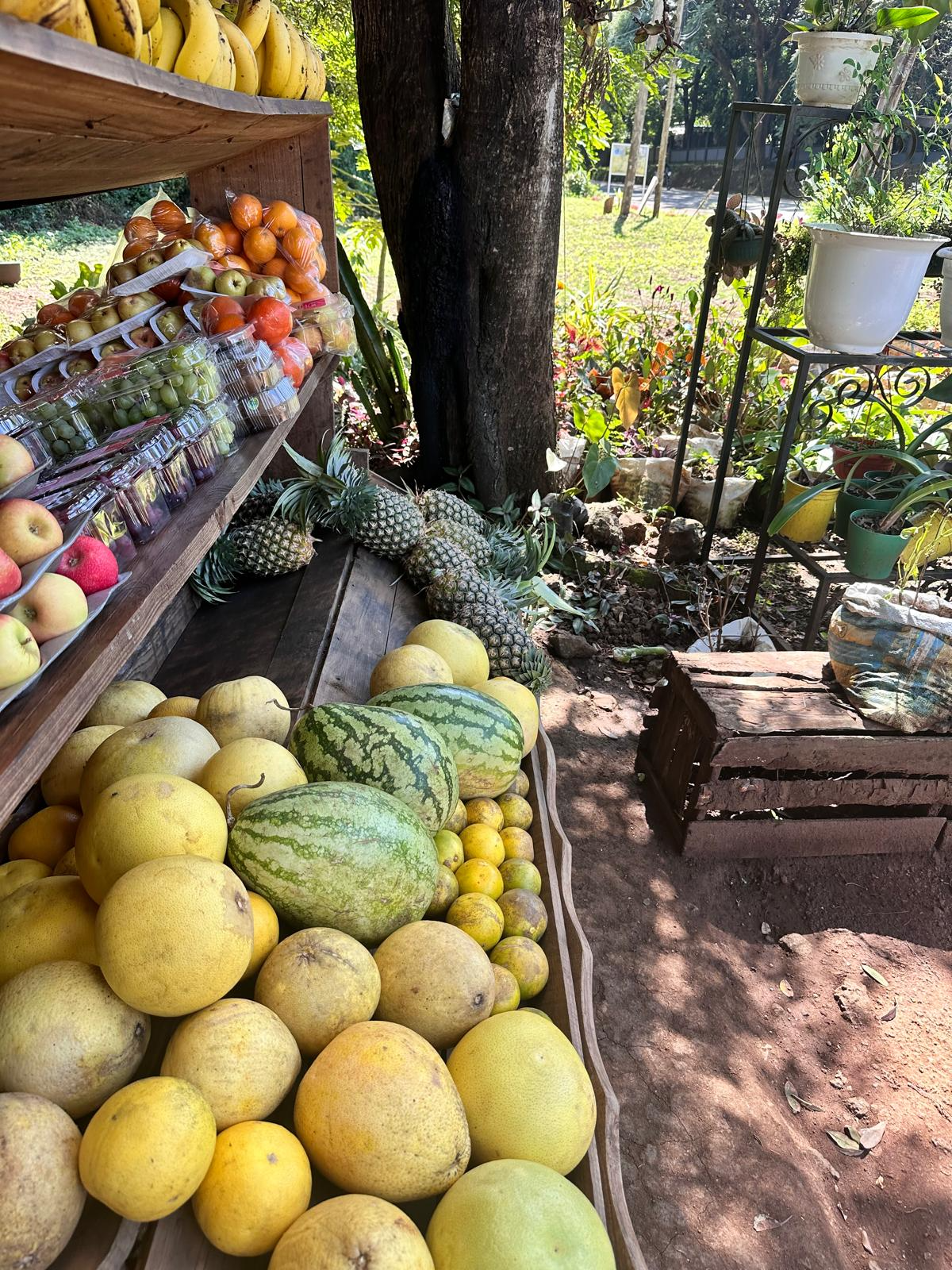The Invisible Labor Behind Moshi’s Brand
A view of Mount Kilimanjaro. (Photo: Ananya Maddipatla)
In Moshi, Tanzania, the tourist’s experience often begins with long safari excursions, Mount Kilimanjaro treks, and purchasing souvenirs from curio shops. In the heart of this city of just over 200,000 people, local vendors display their handcrafted kitenge cloth, beaded jewelry, and fresh produce, with each item representing the spirit of community and entrepreneurship.
A large portion of Moshi’s GDP comes from the tourism industry. In 2024, there was a 13.2 percent rise in Kilimanjaro visits, and the industry produced earnings of approximately 8,021,278,860 TZS (3,000,000 USD), an increase of 9.5 percent from the year prior. These numbers are sustained by the efforts of a divided working class of low-cost laborers in tourism or industrial companies and small-scale street sellers, many of whom are women.
Women play a central role in creating and maintaining what is often called the authentic “Moshi experience.” In an opportunity and resource-abundant city, their stories reflect how their perseverance sustains their livelihoods amid structural inequities.
The turn of tourism
The tourism sector in Tanzania, which created ~1.5 million jobs, is increasingly dominated by expatriates and upper-class Tanzanians. At the same time, the relatively cheap labor associated with elementary and informal occupations is highly demanded, not only to run the tourism services, but also to create a sense of domesticity for foreign visitors.
“By reframing our understanding of women-run businesses, their progress, challenges, and realities, we can better recognize our own role in this global web of inequality. It requires moving beyond labels of “poor” or “exotic” to appreciate the perseverance behind Moshi’s labor while still supporting reform and stability on a structural level. ”
The ambiguity of Moshi’s informal and formal sectors is reflected in the fragmentation of the jobs of street-vendors, small-businesses, and domestic help, with some having been government-issued and others doing it by virtue of their ability. In Moshi, most women earn their income through informal, low-paying work such as vending, cooking, or farming work often excluded from official economic statistics. Especially as many populations are unregistered, the national labor statistics reports tend to contain disaggregated and misleading data.
Kitenge: the African fabric
The abundance of the kitenge fabric in East Africa makes it a popular tourist souvenir, due to its cultural significance and affordability. Along the streets of Moshi town, women line up against the walkways of curio shops to showcase their stitched patterns, for prices less than 26,000 TZS (~10 USD).
Zamda’s dresses in Urban Moshi. (Photo: Ananya Maddipatla)
Zamda, a clothing saleswoman, has sold kitenge dresses and accessories over the course of 10 years in Kiboko, Urban Moshi. Her informal business was self-started, after quitting school in grade seven. Since then, she has made a living by importing kitenge and raw materials from Dar es Salaam, while selling the sewn garments on the streets. She says that securing the imported materials for an affordable price and selling them for a profit is a challenge, especially when the number of customers that visit her stall per day is unpredictable. Like any of the other nearby vendors, the items are prone to theft or damage, requiring the women to remain near their stalls, consistently, for eight hours everyday.
Zamda is the only woman in her family to pursue this career. So she joined a cohort of women selling identical clothing, with whom she shares close friendships despite their competing products. The camaraderie of the women in these informal spaces reflects the sense of community that local vendors pride themselves on, attracting customers to the arrays of hueful pieces that line the street sides. Amidst this found family, the women inadvertently practice some ‘toned-down’ business tactics which facilitate price bargaining techniques and provide greater product substitute ranges, enabling customer satisfaction.
Neema Bags is a division of Neema International, an educational non-profit in Moshi, and is known for the production of kitenge products based in the rural Uru village. According to Magreth Upendo, the Director of Partnerships and Communications, “Women in Uru are the backbone of their family, they end up doing local labor at a cheap cost.” By employing 5 full-time seamstresses from Uru, Neema workers aim to reduce unemployment rates in both rural and urban areas. “If we had enough funds, we would bring even 50 women to contribute to Neema Bags. Because we are in the village, it is difficult,” she says.
Informal or formal goods?
It is mostly women who gather in the market or along the sides of main streets to sell fresh fruits and vegetables. One kilogram of onions, for example, are affordable at prices less than 3000 TZS (1.5 USD). Unlike kitenge products, fresh produce is a necessity and highly demanded, leading to their relatively lower selling prices.
Rosie, a well-known local produce-vendor, has been involved in the formal side of this business for 18 years, building on the legacy of her mother. According to Rosie, she loves her business with hopes of expanding it even further. “Ninapenda sana…nataka kuwa mkubwa,” she says. Rosie’s prime position in the midst of the housing and schooling area of Moshi attracts more customers, but she deals with challenges like any other business-woman.
Rosie’s fruit stall in Urban Moshi. (Photo: Ananya Maddipatla)
“With how time is going, I wouldn't say their jobs are secure,” says Upendo. “But the street vendors, they depend on tourists that are passing on the road, they do not have that much of a marketing power.” She requests that it is up to the government and other NGOs to facilitate small-business and informal labor growth.
Where do we go from here?
Across the Global South, tourist economies often rely on informal labor that keeps services cheap for visitors but precarious for locals. The UN Women’s Organization estimates that 74 percent of women in Sub-Saharan Africa work informally, a reality echoed in Moshi’s markets.
This story is not just about persistent inequality but also about the need for a structural shift in tackling poverty in Moshi—from governments, NGOs, and public institutions alike. Governments must use allocative budgeting to ease tax burdens and create stable jobs, while NGOs and non-profits require adequate funding and support to achieve their missions. Together, these measures can uplift both rural and urban communities, raising literacy, expanding education, and boosting the economy across labor, social, and economic lines. Yet the idea of Moshi often becomes disillusioned once the reality of the city is revealed, especially when misleading government-issued reports mask the true social and economic landscape.
By reframing our understanding of women-run businesses, their progress, challenges, and realities, we can better recognize our own role in this global web of inequality. It requires moving beyond labels of “poor” or “exotic” to appreciate the perseverance behind Moshi’s labor while still supporting reform and stability on a structural level. One fact is undeniable: these women love what they do, setting up stalls daily with unwavering passion despite uncertain profits. Their dedication forms the crux of Moshi’s lived experience.



